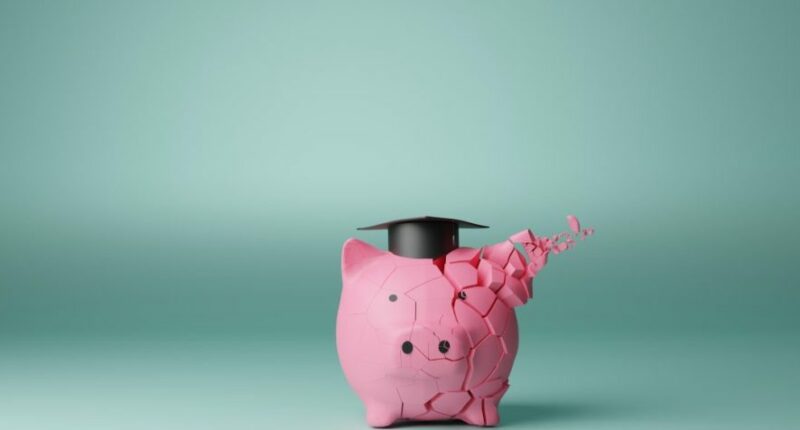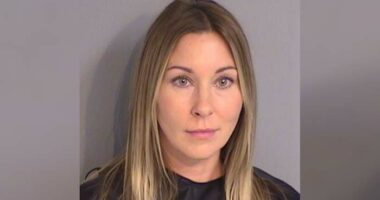Share this @internewscast.com

As millions of students return to their academic pursuits this year, many face mounting anxiety over financing their education. The recent “One Big Beautiful Bill Act,” a significant tax and spending measure signed into law by President Donald Trump over the summer, introduces new constraints on student borrowing that could impact their ability to afford higher education.
Previously, graduate students had access to two federal loan options: Direct Unsubsidized Loans, capped at $138,500 for a lifetime, and Grad PLUS loans, which permitted borrowing up to the full cost of attendance after accounting for financial aid. However, the landscape is shifting as Grad PLUS loans are set to be phased out next summer, with a three-year transition period in place for existing borrowers. Moving forward, new borrowers will be restricted to loans with newly established lifetime limits—$200,000 for those in specific professional degree programs and $100,000 for other graduate courses.
When factoring in both undergraduate and graduate loans, individuals will now face a combined lifetime borrowing cap of $257,500.
This cap may seem inadequate when juxtaposed with the rising cost of higher education. For instance, the average annual expenses for an undergraduate degree can range from $24,920 at in-state public universities to $58,000 at private institutions. Over four years, this translates to a potential $224,000 expenditure for a bachelor’s degree. Adding three years of law school could require an additional $132,000 to $168,000, while four years of medical school could cost between $268,000 and $363,000. These figures clearly illustrate the challenge of staying within the $257,500 lifetime limit.
Reflecting on my own academic journey—culminating in a career as a college professor specializing in race and ethnic studies—it’s evident that under these new restrictions, achieving my bachelor’s degree, two master’s degrees, and a Ph.D. would have been nearly impossible.
As I reflect on these numbers and my journey to becoming a college professor, specializing in race and ethnic studies, one thing becomes clear: I would never have been able to earn my bachelor’s degree, two master’s degrees, and Ph.D. under these new rules.
Adjusting for inflation, I took out nearly $300,000 in student loans, and I paid them all off within a decade of starting my college teaching career. For me, the system worked. I wonder how today’s aspiring professionals, especially those from less prosperous backgrounds, will manage.
The future of professionals
Professional students already graduate with a lot of debt – often far more than the new loan caps will allow. In 2020, more than a quarter of graduating medical students and nearly 60% of graduating dental students had borrowed more than the new limits would allow, author Mark Kantrowitz, who is an expert on student loans, has found. In 2024, nearly a quarter of medical school graduates left school with more than $300,000 in debt.
The new borrowing limits will likely hit minority students especially hard. While about 61% of all graduate students take out student loans, the share is much higher for Black students compared with white students, 48% to 17%.
While some might be able to supplement their federal loans with private ones – which tend to have much worse terms for borrowers – I fear that many others will be forced to end their educations prematurely.
That, in turn, would worsen the already severe shortage of doctors serving the Black community. As pointed out in a 2023 report of the Journal of the American Medical Association, the shortage of Black primary care physicians is directly related to overall lower population health and ultimately higher mortality rates within the Black community. As of 2023, fewer than 6% of U.S. doctors were Black, versus 14.4% of the population.
Research has suggested that student loan relief would help diversify the medical workforce. Adding new restrictions would likely have the opposite effect, making the profession more homogeneous and significantly undermining Black public health.
Or consider attorneys. Law school costs have risen more than 600% over the past two decades. The average 2020 law school graduate left with $165,000 in student debt.
Black law students face unique challenges, graduating with approximately 8% more debt on average than white students and facing significant wage disparities once they enter the legal workforce. Making it harder for Black students to afford law school could reduce the number of Black attorneys, which has held steady at about 5% of active lawyers over the past 10 years.
Reducing access to federal student loans risks disproportionately affecting women, since they hold roughly two-thirds of all student debt.
What comes next
Supporters of the change say that capping graduate student borrowing will encourage universities to rein in tuition hikes. They also say private student loan providers will step in to help students. I am skeptical, but the true test will come next year.
In the meantime, professional students might want to familiarize themselves with the many scholarship opportunities available. Many organizations offer a range of medical school scholarships, including those targeting women and minorities. The same is true for students interested in law school. A helpful starting point is this list of scholarships with approaching deadlines and these opportunities for women and people of color.













